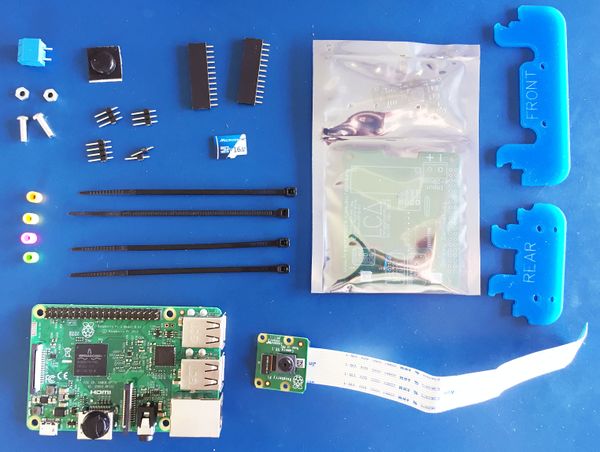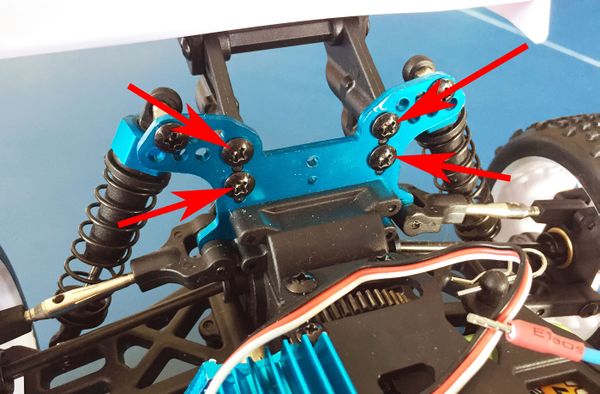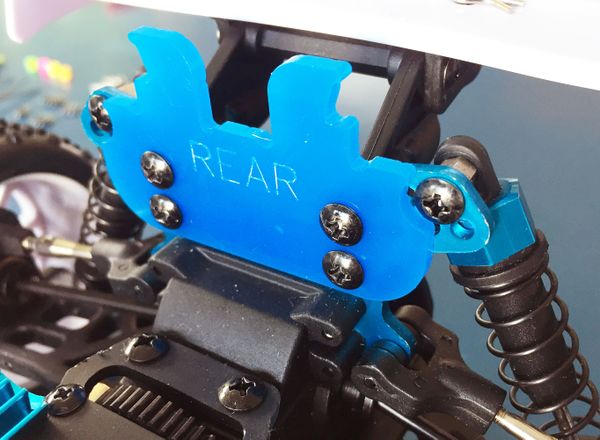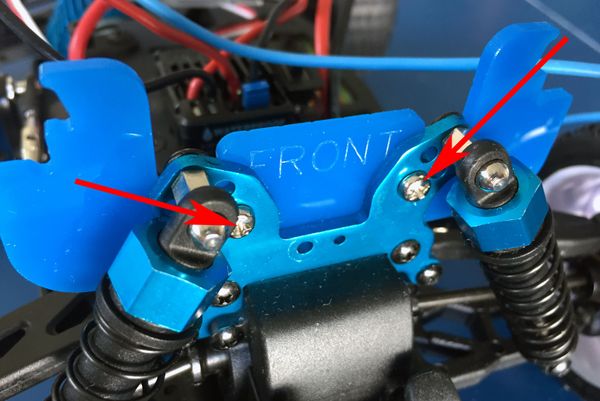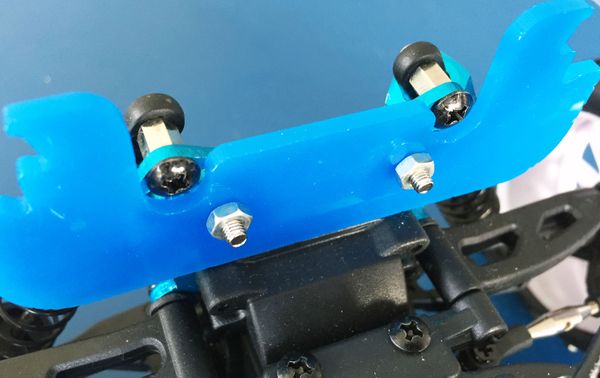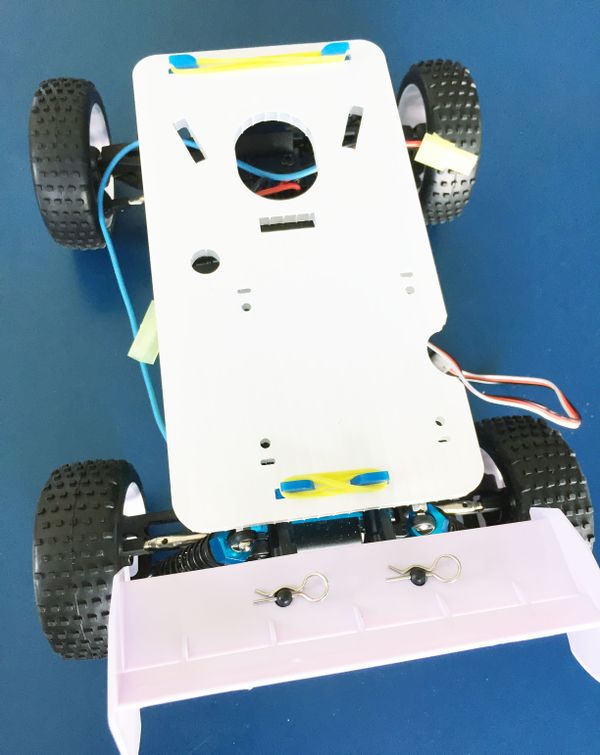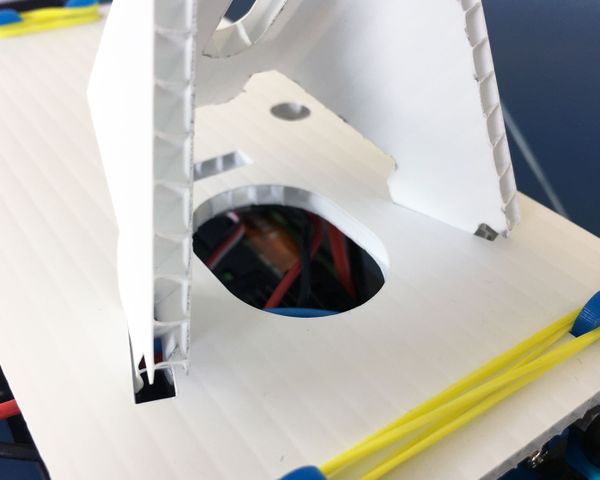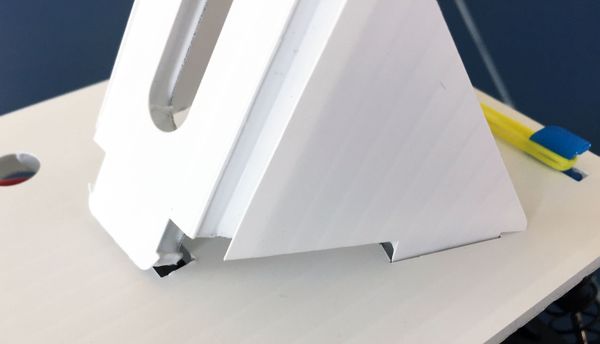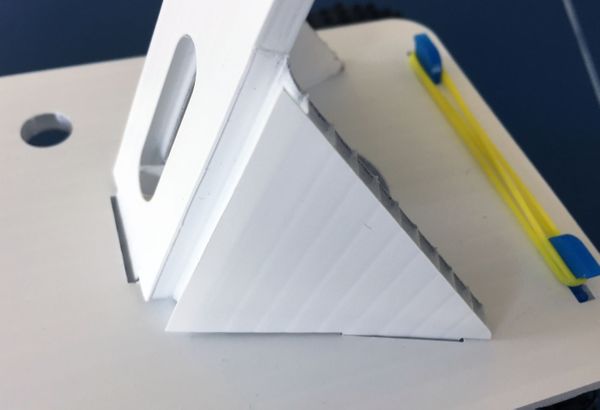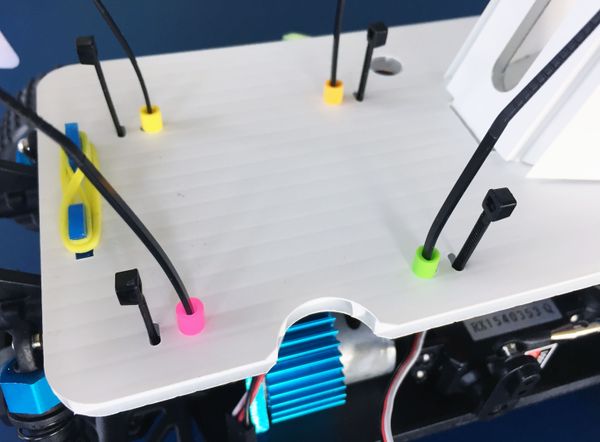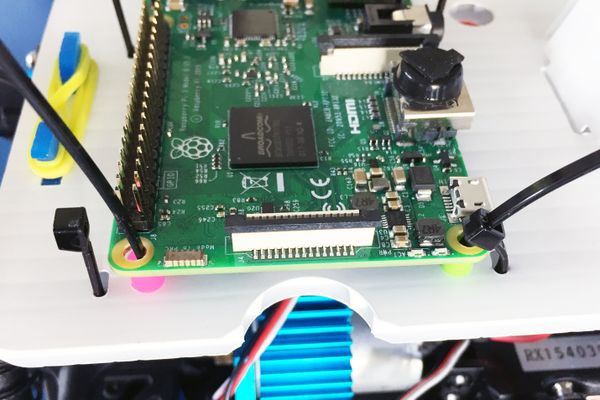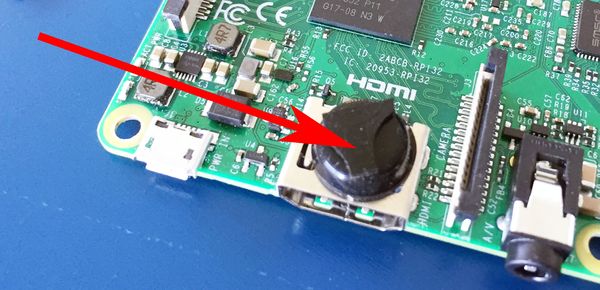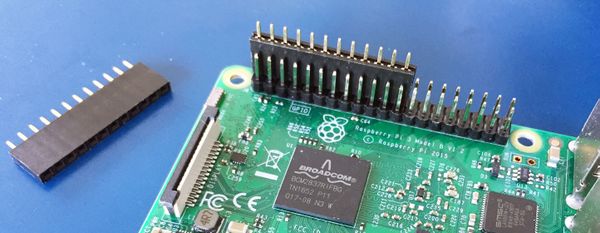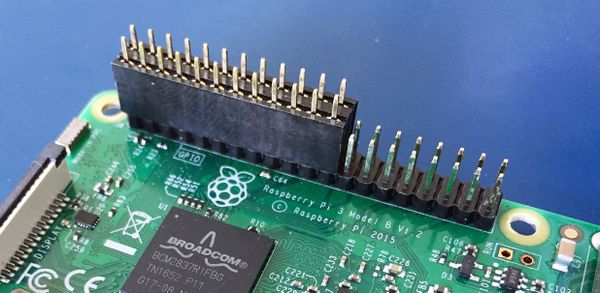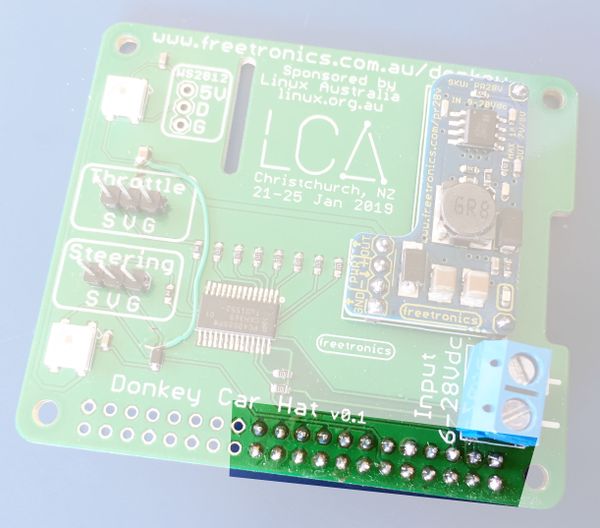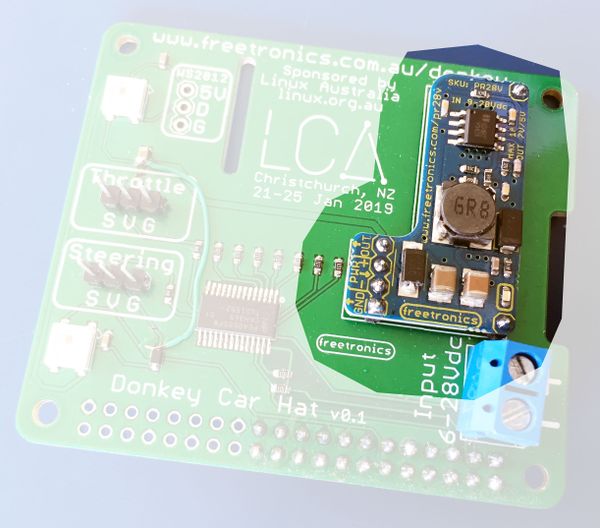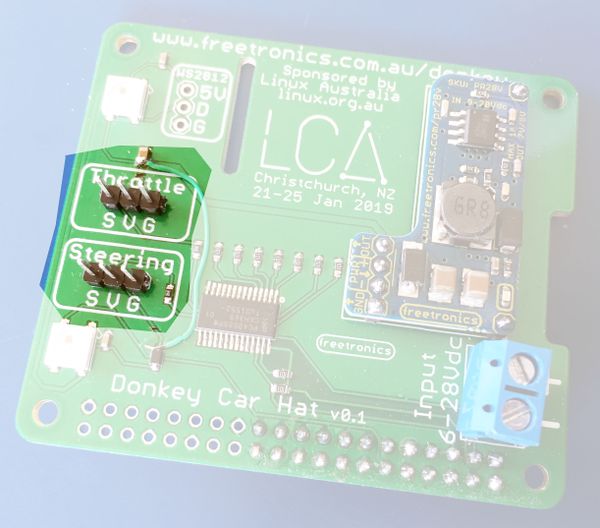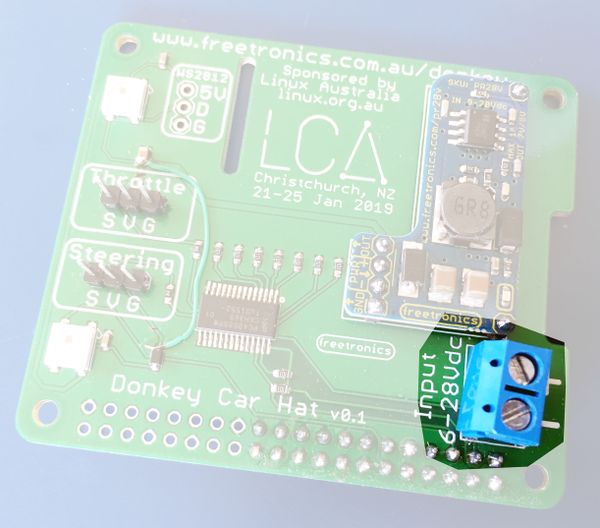Donkey Car
Before You Begin
There are several steps where it's possible to destroy the Raspberry Pi, the camera, or other expensive parts of the kit. Please don't rush! Read these instructions carefully, and check before making any soldered connections, attaching the camera, or attaching power.
WARNING: Do NOT connect or disconnect items such as the servo or speed controller while power is applied. During testing we accidentally destroyed several servos by doing this. Make sure everything is powered down before doing ANY work on the car.
Parts Required
There are 4 major items included in your kit:
1. 1/16th scale RC car chassis, with a steering servo, a motor speed controller, and a NiMH battery. 2. Battery charger with AU/NZ adapter. 3. White rectangular laser-cut corflute base plate. 4. A bag of small parts.
The bag should contain:
* 1 x Raspberry Pi model 3 * 1 x Raspberry Pi camera and flex cable * 1 x Donkey Car Hat for Raspberry Pi (in anti-static bag) * 1 x Freetronics PR28V voltage regulator, already configured for 5V output (in anti-static bag) * 1 x laser-cut corflute bracket * 2 x blue laser-cut brackets * 1 x 5mm 2-way screw terminal * 4 x small cable ties * 4 x plastic spacers * 2 x 12-way header sockets * 1 x 4-way pin header * 2 x 3-way pin headers * 2 x 1-way pin headers * 2 x 10mm M3 bolts * 2 x M3 nuts
You will also be given a micro SD card and adapter separately, pre-loaded with Raspbian and the necessary software.
Chassis Preparation
Use a Philips-head screwdriver to remove the 4 black screws holding the rear spoiler mount onto the chassis:
Fit the blue laser-cut bracket labelled "REAR" onto the chassis, using the original screws to go through the bracket and into the spoiler mount. Tighten the screws gently so you don't crack the bracket. It doesn't need to be very tight:
Put the 2 x 10mm M3 bolts through the blue laser-cut bracket labelled "FRONT", and through the chassis at the front:
Use the 2 x M3 nuts to secure the bracket. Once again, it doesn't need to be very tight. Just tight enough to stop it vibrating loose.
Fit the white base plate onto the blue mounting brackets. WARNING: The bracket can be fitted upside down. The correct orientation has the small indentation to the right, and the hole to the left:
Wrap the rubber bands around the mounting brackets to secure the base plate.
Examine the white laser-cut camera mounting bracket, which has slots cut through one side of the corflute so that the tabs can bend in one direction. Bend the tabs, and begin to slide them into the slots in the base plate:
Slide the camera mount forward so that the tabs clip into the slots:
When the mount is all the way forward, clip the rear tab down into the slot:
Mount Raspberry Pi On Chassis
Insert the 4 cable ties through the base plate. Start by going down through the slot, then back up through the round hole. When the cable ties are in position, drop a coloured plastic spacer onto the tail of each cable tie:
Place the Raspberry Pi onto the tail ends of the cable ties, so that it sits on the coloured plastic spacers. Close the cable ties, gently tighten them, and clip off the ends:
Attach Parts To Donkey Car Hat
Peel the rubber stopper off its backing and stick it on top of the HDMI port on the Raspberry Pi.
The stopper isn't quite high enough on its own, so also cut off part of the thin rubber from the backing and stick it on top to increase the thickness:
Fit the pair of 12-way pin sockets onto the Raspberry Pi header. Yes, we know the sockets are shorter than the header! It doesn't matter, because all the pins we care about are within the first 10 positions on the header. Make sure the sockets are all the way towards the end of the header:
The pair of pin sockets fit side by side:
Sit the Donkey Car Hat on top of the Raspberry Pi, so that it mounts on the header sockets. Then solder all 24 joints, being careful not to bridge any pins together:
Carefully remove the hat from the Pi. Wiggle it gently straight up, so that you don't bend the pins on the Raspberry Pi header.
Next comes a tricky part!
Working on the top of the hat, place the 4-way and pair of 1-way pin headers into the holes for the voltage regulator module. The longer end of the pins should go down through the hat.
Sit the regulator module on top of the pins, so that they come up through the module. It will be a bit wobbly, so be careful moving it around.
Solder the pins to the regulator module on the top:
The pins will now be connected to the module, but not to the hat.
Turn the hat upside down so that the regulator module is resting on the bench. This should push it against the hat, so that you can solder the pins on from underneath.
When you've finished soldering the pins underneath, use side cutters to trim off the excess length of the pins.
WARNING: Make sure you cover the pins with your hand when you trim them. Otherwise they shoot off across the room and end up anywhere. Make sure they go in the bin, not end up on the floor!
Fit the pair of 3-way pin headers to the sections marked "Steering" and "Throttle". Make sure they have the long ends pointing UP, not down! The short end goes into the hat.
Holding these in place while you solder them from underneath can be difficult. They will tend to fall over at a strange angle, or fall out entirely.
You can use a blob of Blu-Tack to hold them while they are being soldered.
The last part to solder onto the hat is the 2-way screw terminal. Insert it from the top of the hat, with the openings facing towards the edge. Use Blu-Tack to hold it in place, turn the PCB over, and solder it from below.
